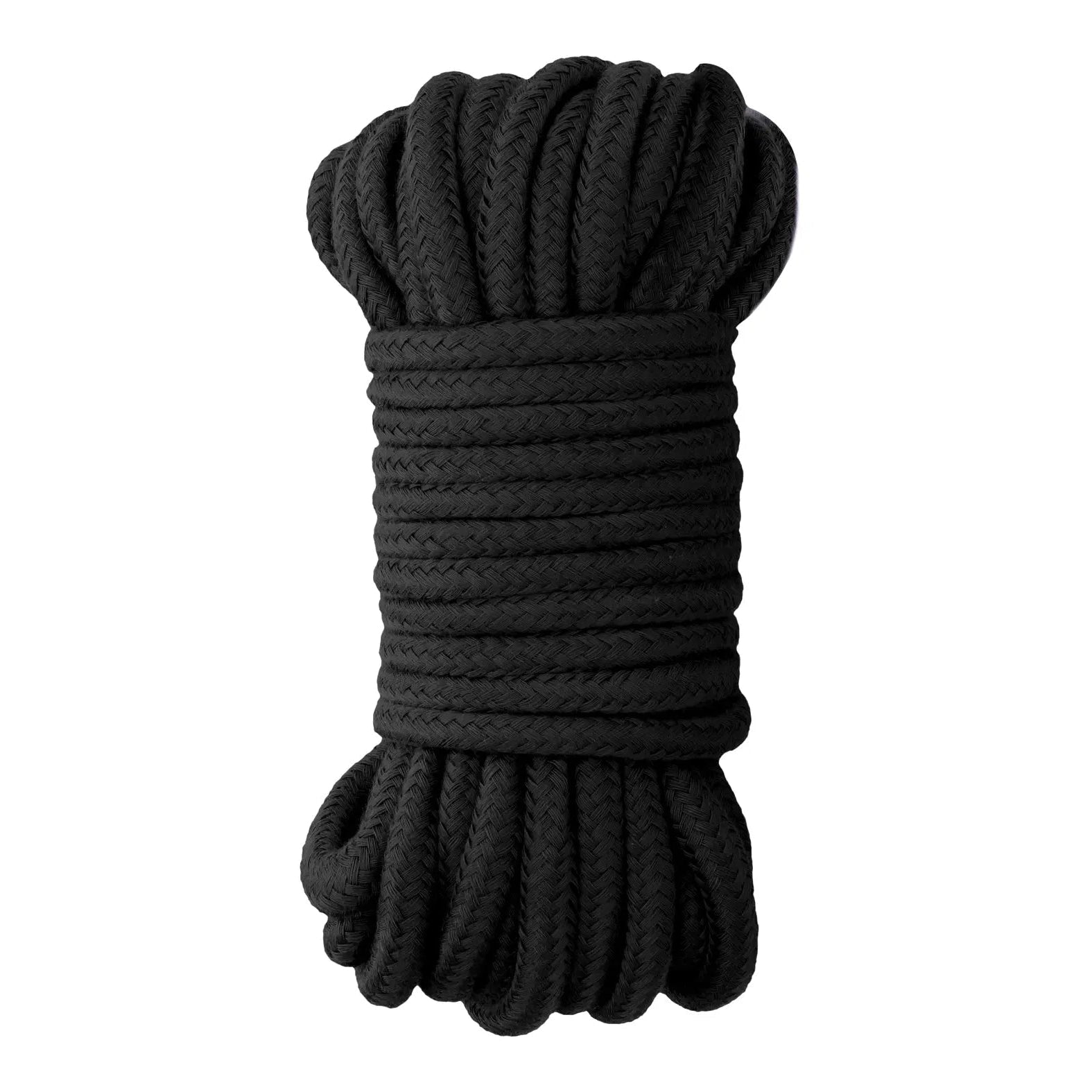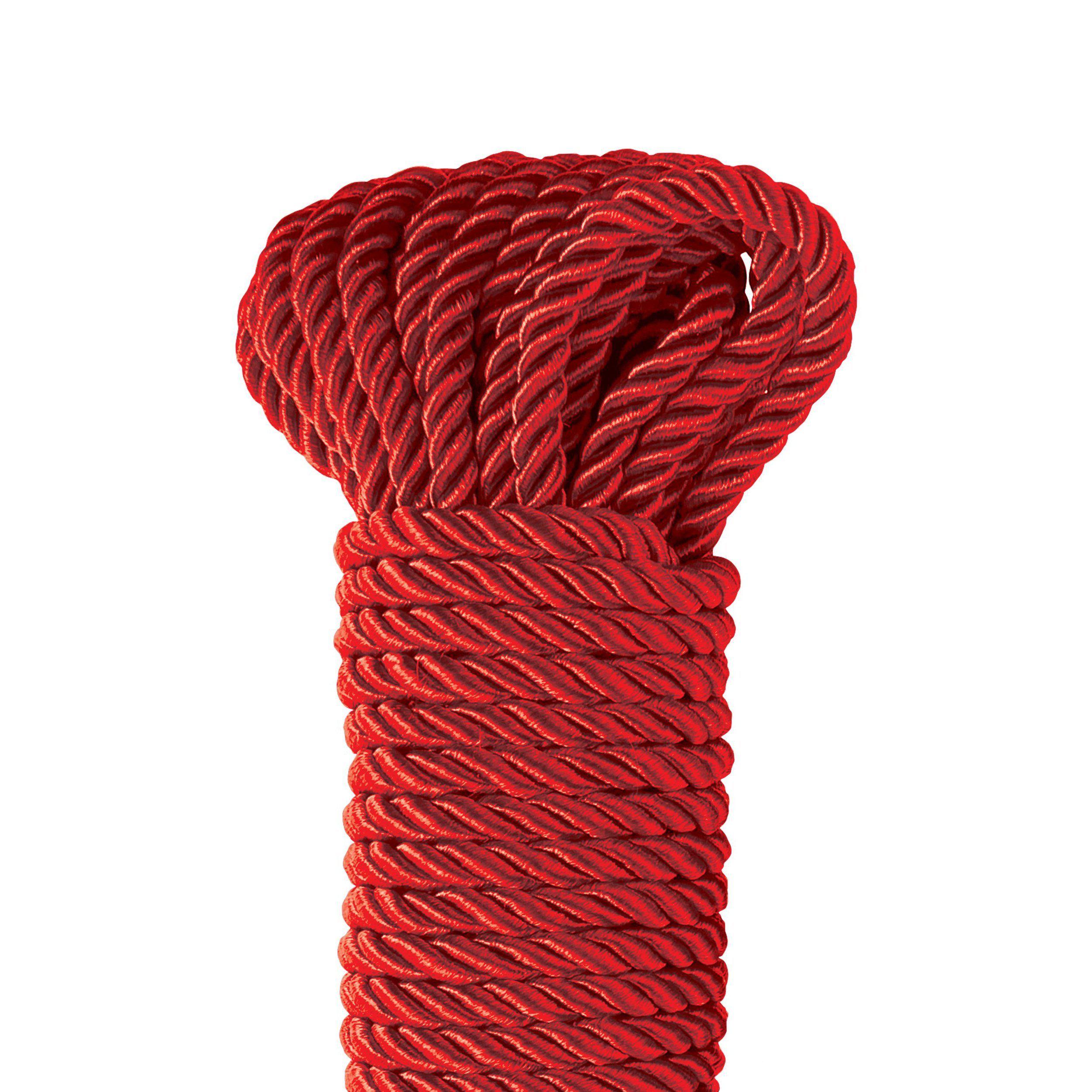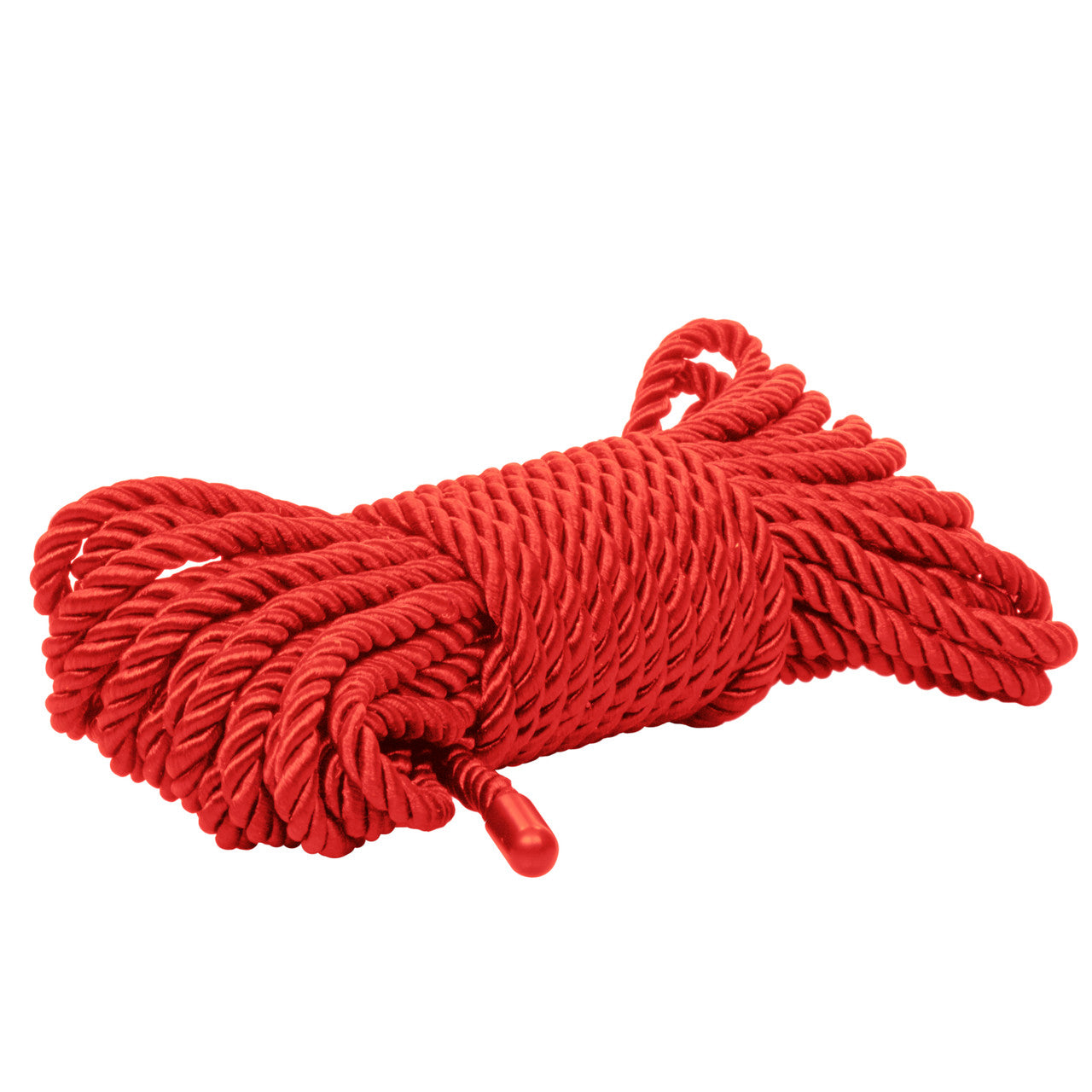Shibari is an advanced rope bondage technique, but the rope is also a preferred essential restraint implement to keep your partner in place and have your way with them. However, not all ropes are created in the same way, and there are different ropes for different applications. Our experts have shared their thoughts and have created the following guide on how to choose BDSM rope, outlining the most important aspects of the various rope options.
What is a Bondage Rope?
Bondage rope is any type of rope you can use for bondage and BDSM plays. It is imperative to get the correct type of rope for the proper application, as it will affect your partner’s safety and the entire experience. No matter the rope you select, be mindful of your partner’s anatomy and safety so you both can have a satisfying bondage experience.
Shop Bondage Ropes

Shots Ouch Soft Silk Japanese Rope

Fetish Fantasy Series Japanese Silk Rope

Fetish Fantasy Series Deluxe Silk Rope

Scandal BDSM Rope
How to Select BDSM Rope?
The bondage rope you select will impact the way you can restrain your partner and the knots you can achieve. Here are the primary considerations to know when you choose bondage rope:
-
Material – the critical thing to select is the rope material, and here we bring you a detailed overview of the possible bondage rope materials:
- Hemp – hemp fibers derive from the hemp plant, and these are firm yet soft and provide a pleasant feel on the skin. Hemp ropes tend to be flexible, allowing for tight knots that stay in place without any particular effort. Also, hemp rope is washable and easy to maintain.
- Jute – jute is another plant-derived fiber that has a beautiful look, a natural sheen, and firmness that many prefer. It holds knots really well and stays in place. It is lightweight, but you need to be careful with the tension, as jute rope may tighten and harm the submissive.
- Cotton – cotton is a natural fiber that is softer than hemp and is comfortable and durable. Cotton rope is lightweight, becomes pliable with use, and is elastic, which means you need to be careful when tightening cotton rope knots to avoid hurting your partner.
- Silk – derived from the strands of the silk bug cocoon, the silk ropes are sleek, elegant, and durable. These are the preferred choice for Japanese-style bondage, as they are lightweight, soft, and hold knots well. One thing about silk ropes is that they are high-end and expensive.
- Nylon – Nylon is a synthetic material for many applications, including rope. It is very durable, long-lived, easy to maintain, and looks and feels sleek. It is also budget-friendly, but it is flexible and slippery, so knots made from nylon are prone to loosening and ruining the experience.
- Polypropylene – polypropylene is a synthetic bondage rope that is smooth, sleek, and lightweight. It is waterproof and easy to maintain, but it is also slippery and prone to sliding and loosening precise knots.
- Length – the length of the rope will determine how you can use it, as you can use shorter lengths to bind hands, wrists, or ankles, but you will need more length to create intricate bindings or Shibari knots. Thus, it is common to find ropes 30 to 35 feet long and additional 15-foot long spare ropes for additional binds.
- Diameter – the rope’s diameter is another feature to consider, as it affects maneuverability, handling, and comfort. The usual bondage rope diameter is between 3 and 8 mm, or 0.1 to 0.3 inches. Thicker ropes are more robust and can bear more load, and users find them more comfortable. Thinner ropes are more flexible and can create more compact knots.
- Construction - bondage ropes can be twisted or braided, which affects the look and feel of the rope. Usually, ropes made from natural fibers like jute and hemp have three or more strands that are twisted together, and ropes made from synthetic materials are braided, usually surrounding a rope core. We need to note that many Shibari enthusiasts remove the core from a braided rope as it allows more flexibility in use.
This is our guide on how to choose BDSM rope, and we hope we covered the basics. We have a large volume of guides on how to choose and use different BDSM tools and various sex toys. We also invite you to check out our excellent sex toy store, where we carry a fantastic selection of BDSM ropes, BDSM tools, sex furniture, whips, canes, ticklers, etc.
FAQs
Is rope bondage dangerous?
Rope bondage is not dangerous if you know what you are doing. If you are a beginner, we propose you get a hemp or nylon rope and practice your knot-tying knowledge before you go and bind your partner. Then, start with light bondage, binding the wrists or ankles, and after a while, when you feel confident, you can try more advanced bondage techniques. You also need to touch up on anatomy knowledge and bind your partner in areas where there is muscle support, avoiding the overtightening of the knots that can restrict blood flow or damage nerves.
Can a beginner use BDSM rope?
Yes, beginners can use BDSM rope, but we suggest you use beginner-friendly materials like jute or nylon or get pre-bound rope sets that have adjustable knots so you can see if this is something that interests you.
What are some interesting bondage knots to try?
You can try various knot-tying techniques, but the most commonly used knots in bondage plays are the single-column tie, double-column tie, overhand knot, square knot, half-hitch, and Lark’s head.
How to clean a bondage rope?
Cleaning a bondage rope depends on the type of material the rope is made from. If you have a hemp rope, you can wash it in a washing machine and leave it to air-dry. But jute, cotton, or silk ropes need more careful washing, and you should only rinse these in warm water and leave them to air-dry, noting that jute needs to be stretched after drying. Synthetic materials tend to be most effortless to clean, as nylon and polyethylene ropes are waterproof, and these don’t deform when wet.
Learn More With Our Other Sex Toy Guides:
How To Choose a BDSM Pinwheel?How To Choose Wax Play Candles?
How To Choose a Dildo Chair?
How To Choose Sex Sheets?
How To Choose a Sex Pillow?
How To Choose a Dildio Mount?
How To Choose a Sex Machine?
How To Choose a Sex Bench?
How To Choose a Portable Sex Machine?
How To Choose a Riding Sex Machine?

